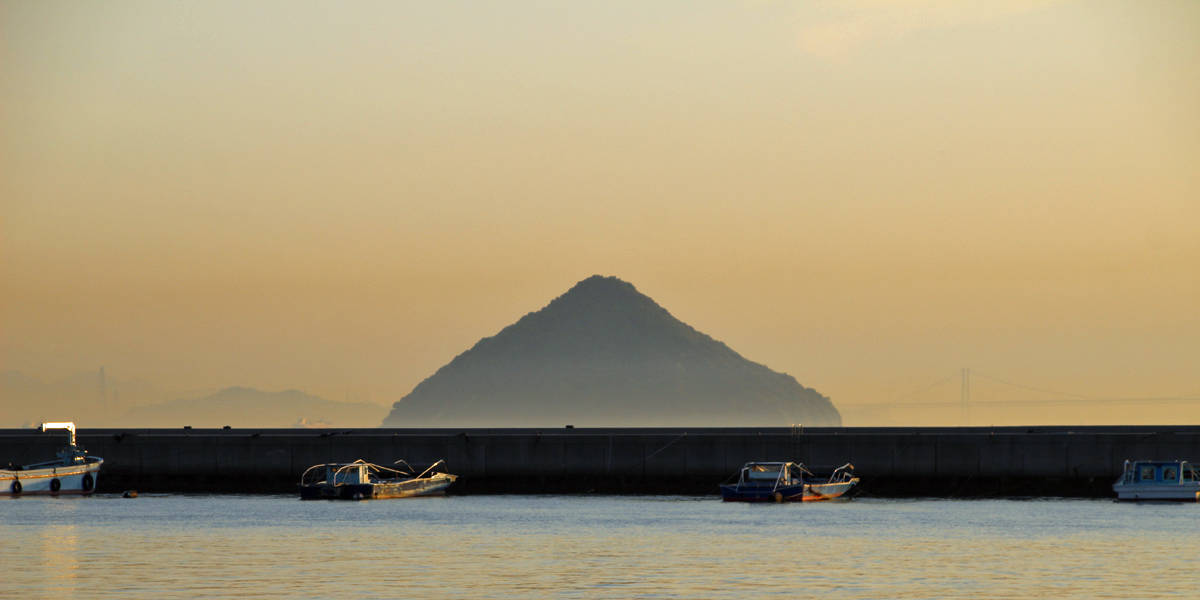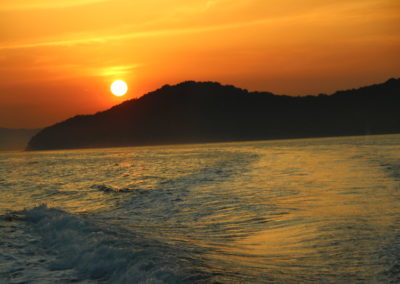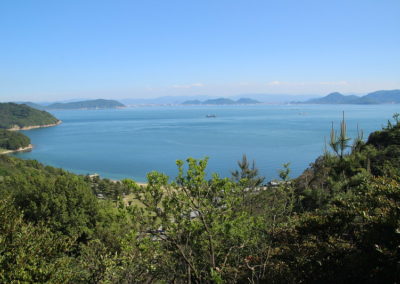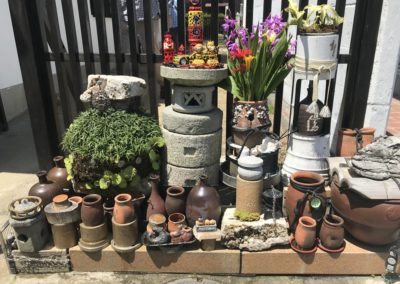
WELCOME TO NAOSHIMA
Through the back window of the ferry the sun was setting across the silhouette of Naoshima. The air was still warm and that familiar haze created a beautiful light. A fitting end to another amazing day in Japan. We stayed on in the port town of Miyanoura after the museums had closed, and most of the group had returned to Takamatsu, spent.
Naoshima Island
A day of art and engagement in the spring heat had exhausted them, in a good way.
Miyanoura offers a few small bars and cafes catering to the hordes who visit for the Benesse Art Site, a museum and hotel complex that combines art, architecture and landscape. Unless you are staying in one of the hotels or a local guesthouse, you will come and go by day and leave the evening to the locals and few tourists who venture out from the Benesse House restaurants. We took advantage of the post-tourist serenity to relax in the evening sun to reflect on what a beautiful spot the Seto Inland Sea provides.
The island of Naoshima itself, in what we have become accustomed to on our visits to Japan, is split in two. The western half of the island is occupied by a large industrial refinery. On the eastern half, the population of around five thousand is spread across several villages, and they go about their business among the art sites and thousands of annual tourists. The fishing boats signal a traditional way of life, they still fish off the port walls, walk their kids to school, parade and politic. Though they have embraced tourism in many respects, with a salt works, baths, local beer, coffee shops and campgrounds.
If you are lucky enough to be a guest of one of the Benesse hotels, life for you is sweet, organized, but sweet. The hotel provides you a scheduled courtesy shuttle to whisk you between the port, Art House Projects, hotels and museums. The restaurants will cater to your every need in an exquisite way, and the grounds and beachfront provide a very relaxing place to meander. To me this is an absolute oasis, a haven, a perfectly harmonious unreality, but a magical and relaxing one.
If Benesse isn’t you, you can stay in a yurt, or caravan at the edge of the Benesse site, and enjoy a morning stroll along the sand and an early selfie with Yayoi Kusama’s famous polka dot pumpkin. Though don’t leave your shoes out on the grounds – as the sign says – they may be taken during the night by a Raccoon Dog, or Tanuki as they are known.
An E-Bike or small hire car will get you around most of the island, including the small winding roads above the island, but also give you an ability to stop at some of the villages, salt works and fishing park that you will see from the bus but not have time or means to experience. Hiring one of the few cars is a worthwhile investment for your time on the island, and a easy freedom of movement on an island with one traffic light. (Don’t forget your international license)
During the day we had visited the Art House Projects, a series of abandoned houses taken over by the Benesse group and the vision of its successive chairman. This project allows you to wander the small town of Honmura, and visit a number of houses that have been restored and turned into living art works. A visit to the new Naoshima Town Hall is a must, as is the climb up the hill overlooking the town to the Gojo Shrine – so beautiful.
So as we settled in at Little Plum, before extending our stay at the nearby Shioya Diner, we discuss our day over cold local beer as the sun begins to fade, and the locals go about their business.
To describe Naoshima without giving away its secrets and leaving you with your own discoveries to make is key.
How do I get to Naoshima?
Naoshima is accessible by a 30 minute ferry from Uno port, via Okayama, or a 1 hour ferry from Takamatsu port via the JR Mariner Line from Okayama.
Ask us how.
Art Travel has been visiting Naoshima since 2015, and has stayed at Benesse House on several occasions.




